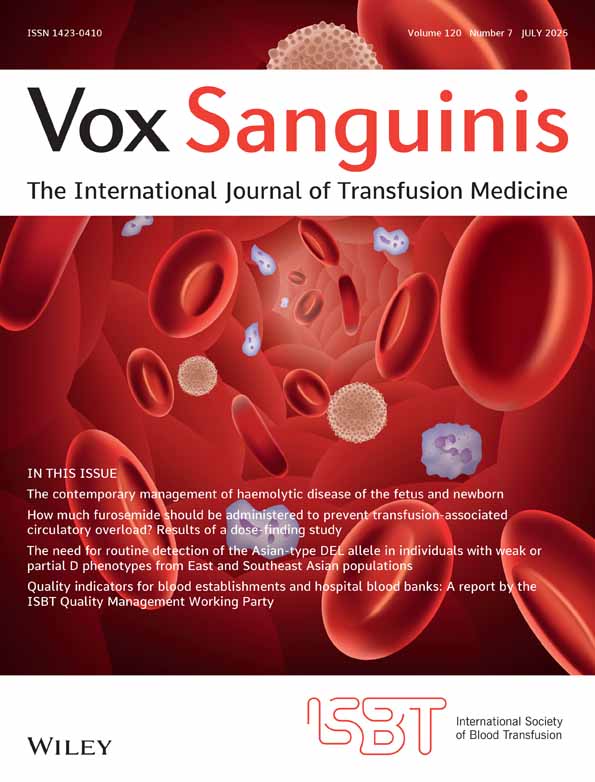Red Blood Cell Transfusions for Total Hip Replacement in a Regional Hospital: A Six-Year Analysis
Abstract
To evaluate changes in the need for homologous blood and to assess the impact of autologous blood transfusion, red cell transfusions in unilateral total hip replacement surgery, performed electively in the period 1986–1991, were studied in a regional hospital. Transfusion data, perioperative blood loss and postoperative haemoglobin concentration of 495 patients were analysed. From 1986 to 1991, the percentage of patients not transfused with homologous blood increased from 18.5 to 45.5%. After the introduction of an autologous blood transfusion programme in 1987, 116 of 430 patients (27.0%) donated autologous blood. No increase in the percentage of autologous donors was observed during the study. Most common reasons for nonparticipation were the patient's age, doctors' underordering and logistic limitations. 81.9% of autologous donors had total hip replacement surgery without homologous transfusions. Mean blood loss reduced significantly from 1,373 ± 781 ml in 1986 to 958 ± 582 ml in 1991 (p < 0.001). Transfusion requirement in the nonautologous patients fell from 2.6 ± 1.8 units in 1986 to 1.4 ± 1.4 units per patient in 1989 and increased thereafter to 2.2 ± 2.1 units in 1991 (p < 0.01) and showed a strong correlation with blood loss (r = 0.58; p < 0.001). No changes in postoperative haemoglobin concentration were observed throughout the study. In conclusion, collection of autologous blood is effective, albeit still underutilized, to reduce homologous blood requirement. The close correlation between blood loss and transfusion requirement accentuates the role of surgical practice in the reduction of homologous transfusions.




